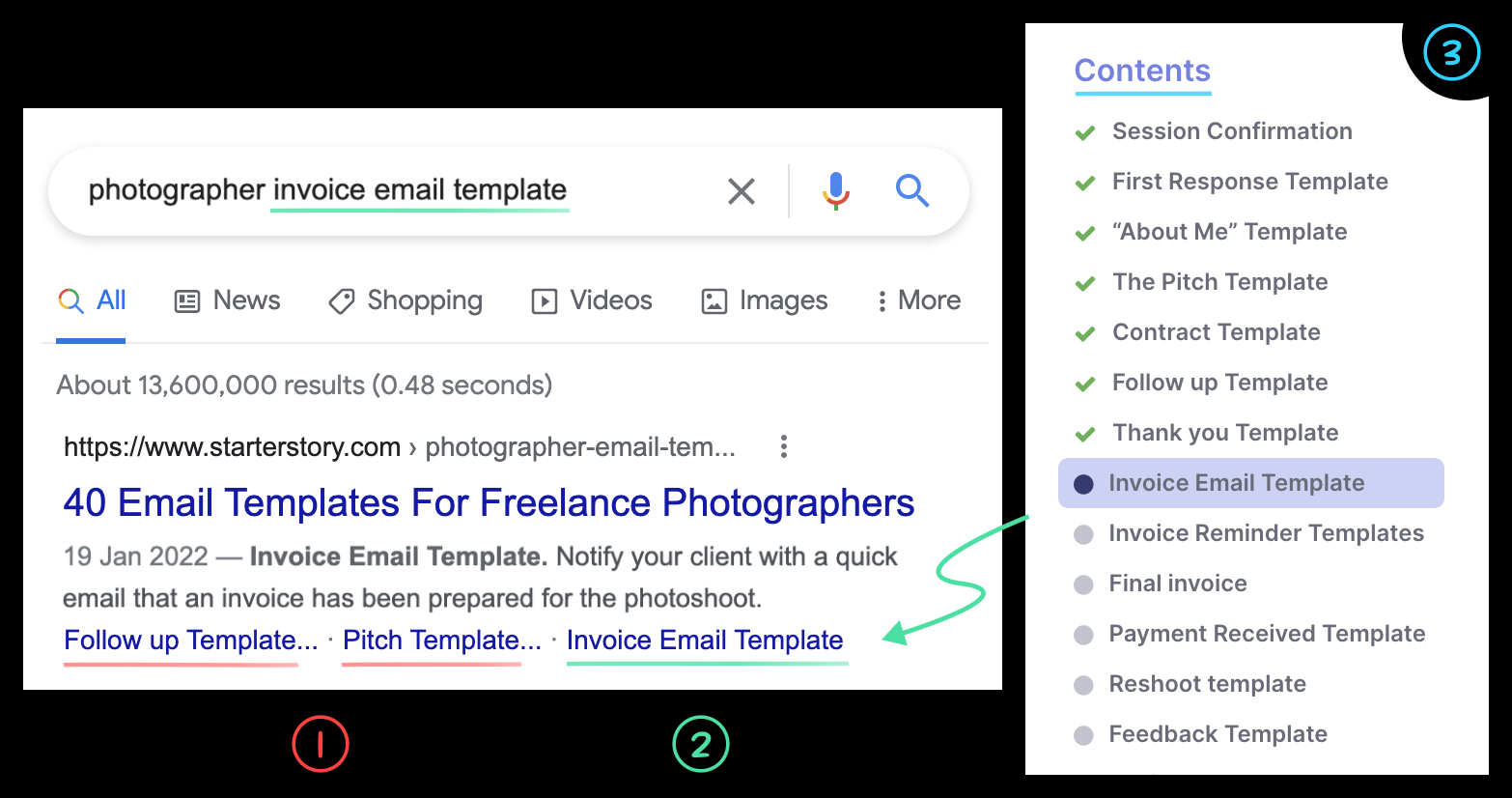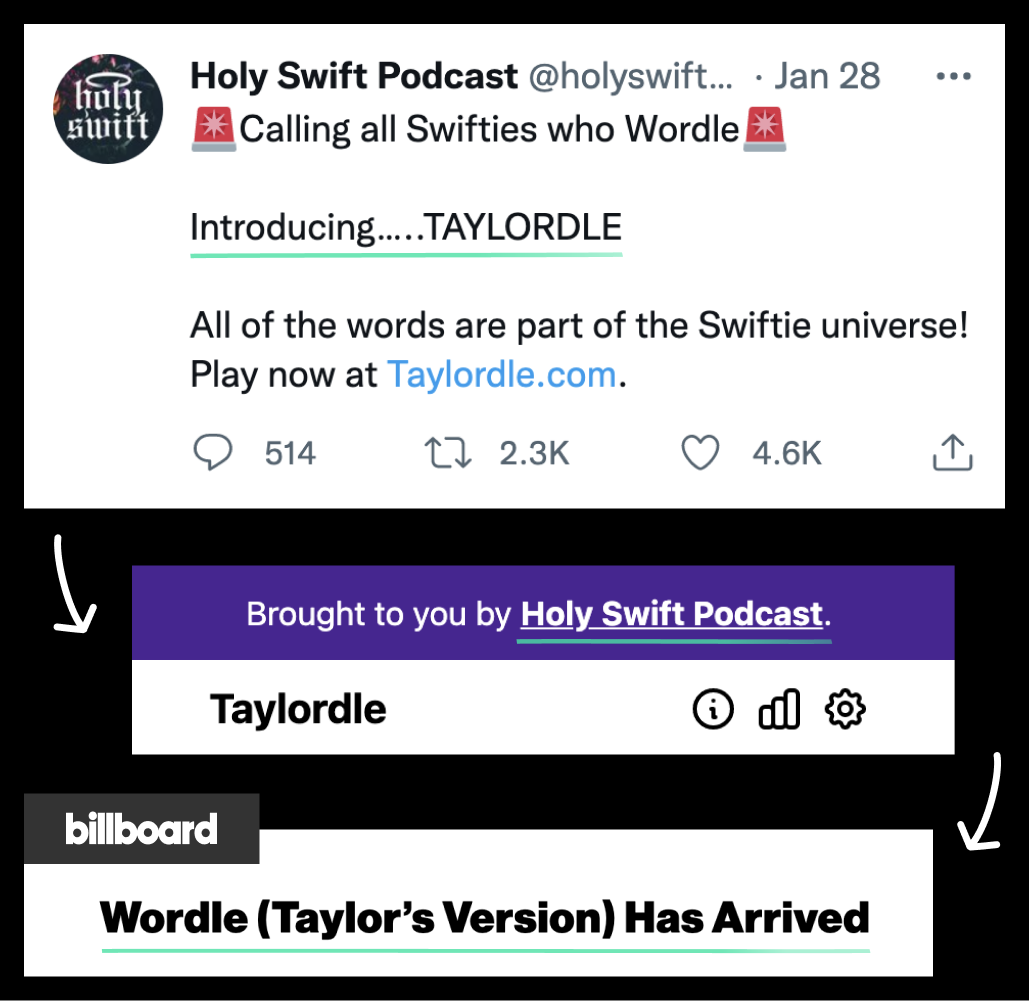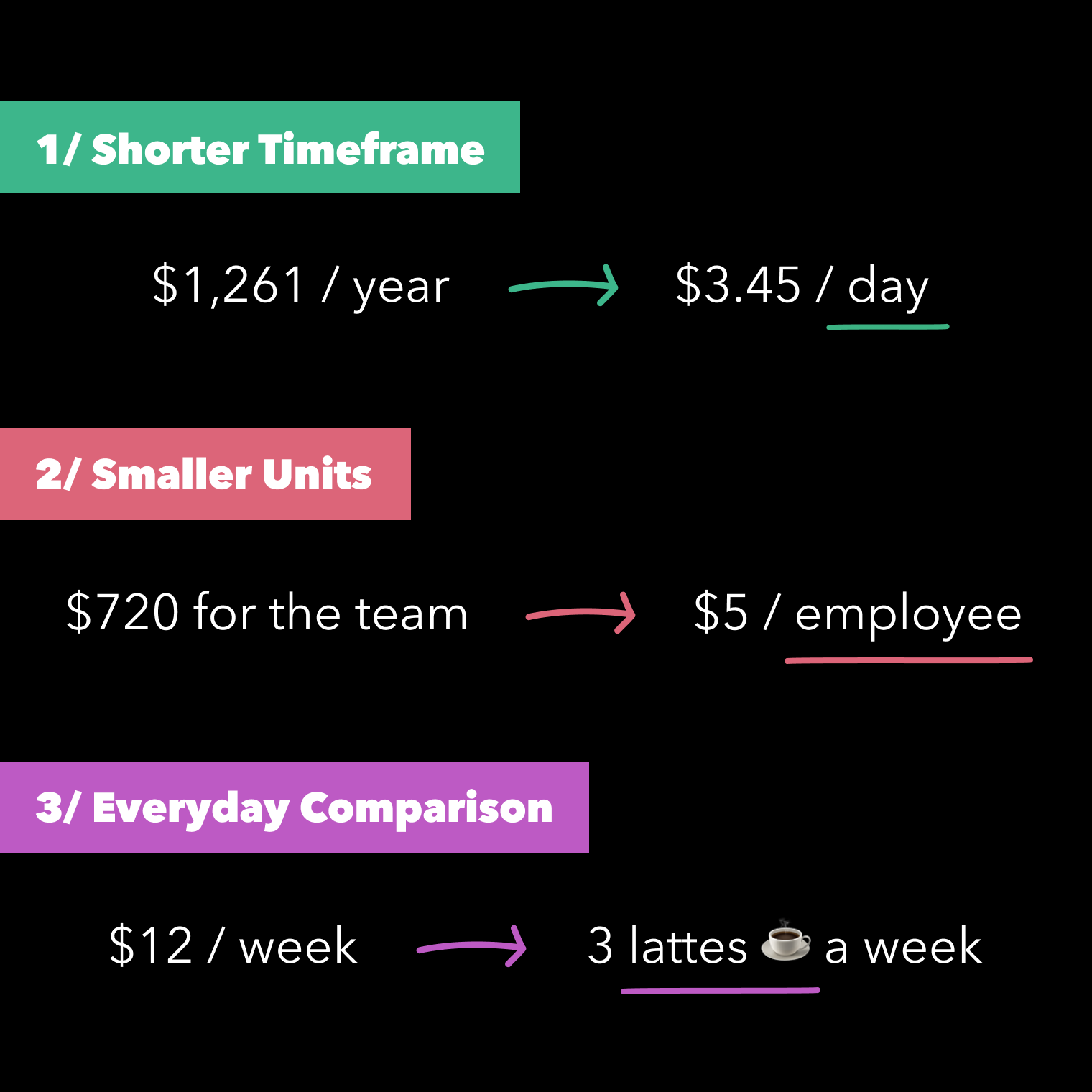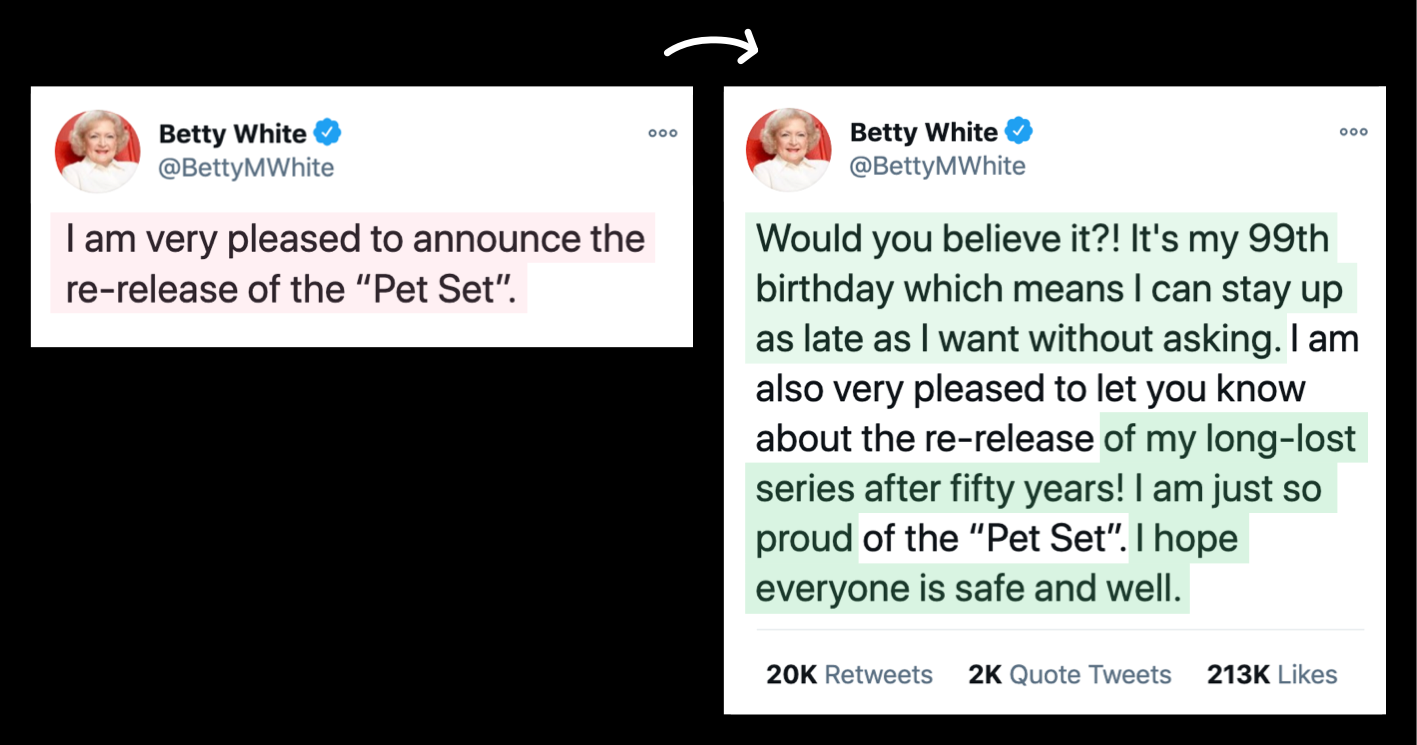What's the key to a successful side project? - **Traction. If you don't see your first bit of traction within** the first week, move onto something else. Check out the guide below for more side project do's and don'ts! - **Adding a table of contents
What's the key to a successful side project?
-
Traction. If you don't see your first bit of traction within the first week, move onto something else. Check out the guide below for more side project do's and don'ts!
-
Adding a table of contents can help skyrocket SEO by increasing session duration and long-tail keyword ranking. Below, Harry Dry shares more copywriting tips to help you level up.
-
Founder Spencer Fry has created an iteration framework for Podia that allows him to consistently collect detailed, thoughtful customer feedback. These 4 questions effectively get him the info that he needs.
Want to share something with nearly 90,000 indie hackers? Submit a section for us to include in a future newsletter. —Channing
🔑 The Key to Successful Side Projects

by Sam Beek
I’ve been working on side projects for my entire career, and I think I’ve finally cracked the code on how to successfully build one. Let's dive in!
Get traction ASAP
Side projects often start with a lot of creative energy, but that soon wears out. Then, you either stop with the project, or move very slowly. What you want is to keep the energy going. That’s where traction comes into play.
Traction is key to a successful side project. Traction is anything that shows that you’re onto something: Your first real users, your first pieces of feedback, your first bit of revenue, etc. I think you should build something that can reach any of these milestones within the first week. If you don’t hit one in a week, just stop the project and start on something else.
With CloudEMDR, I built the first prototype in a few hours, and had real users within 24 hours after shipping it. This kept the momentum up. After that, I could work on monetization and other things.
No logo, no name
Don't waste time thinking about your logo, your name, and similar things. The only person who cares about that stuff is you. Your users only care about the problem that you're solving, so spend your time on that. The rest will eventually come.
Solve an existing, real problem
Getting traction quickly is hard, but there are shortcuts. My biggest learning here is this: Don’t try to be unique in the problem that you’re solving. Solve a problem that people have, that they know they have, and that they are looking for a solution for. It’s totally fine if it’s already a crowded space. That often just means that it’s a good problem to solve.
Example: Even though the market has been around for 15+ years, I’m sure you can still have fun and make money with an email marketing tool. If you’re smart about it and focus on a niche you know well (i.e. an email marketing tool for restaurants), you can make it work. Give it to your favorite places for free and see how it goes!
It doesn’t have to be complex
Because I come from an engineering background, I used to think that all successful tech products had to be technically complex. This is not true. The most important thing is that you provide value. Your customers don’t care how you do that. Build it in a way that's easy for you, using the tech that you already know. Don’t bother if it’s not a technically hard thing to build; that’s an advantage!
CloudEMDR is literally a tool that allows you to share your screen with a moving dot, and it makes a lot of money. The core JavaScript script for the tool is less than 200 lines. Let that sink in.
Make it easy to maintain
Once your project is running and (hopefully) making a little money, spend some time to automate every mundane, repeatable task. This is great, because it means you can dedicate all your side project time to building stuff and having fun.
This doesn’t mean just making sure that people can sign up and cancel without emailing you, and setting up bots to do certain tasks. I mean it in a wider sense. I got a lot of support requests in the beginning. Instead of answering all of these emails, I created text and video tutorials. When people sign up for the service, they get an email with a link to those tutorials. Now, I receive just one support request every two weeks.
Finding good problems
How do you find a problem to build a product around? Two things have worked for me:
- Talk to people around you: A lot of people have problems. Just talk about the kind of work that people do and how they do it. It's kind of inspiring how much information people have inside them. It also helps to surround yourself with people that are doing different things than you are.
- Copy another company's problem, but with your own take: If you see a company or market doing well, step into it. There are so many decisions that you make in the execution of something, that it will always be different. The nice thing here is that you know you are solving a real problem. Remember, first movers are often at a disadvantage.
After settling on my idea, I made a quick iteration and posted it on LinkedIn. It was super crappy, but I just wanted to get users in there. Via LinkedIn, I added a lot of therapists. They started using it and gave me feedback. That's where the growth started.
What's your key to building successful side projects? Let's chat!
Discuss this story.
📰 In the News

from the Volv newsletter by Priyanka Vazirani
💵 Apple's CEO is facing backlash over a $100M pay package.
🏈 Super Bowl ads boosted crypto app downloads by 279%.
📈 DoorDash stocks have surged by 17% after record Q4 earnings were declared.
🤯 Cryptocurrencies could potentially trigger a global financial crisis.
♣ Solitaire was created by a bored intern who didn't receive royalties.
Check out Volv for more 9-second news digests.
📝 A Table of Contents Can Help SEO

from the Marketing Examples newsletter by Harry Dry
Buckle in for three short examples, two copywriting tips, and one favorite tweet!
Three short examples
1. A table of contents can work wonders for SEO:
- Anchor links are included in the search engine results page (SERP).
- Keywords rank long-tail in Google.
- Better UX means a longer session duration, which is a ranking factor.
Pat Walls ran A/B tests on Starter Story, and found a 2.6x increase in session duration after adding a table of contents:

Give this one a try!
2. “Give 'em the razor, sell 'em the blades!"
In the early 90's, Gillette started posting free shaving kits for men celebrating their 18th birthdays. The idea was simple. Hook men at the age where they decide their shaving brand for life:

Let's do some rough math:
90% of men pay no attention. 10% get hooked on Gillette and spend $40 per year on replacement blades for the next 10 years. All of this for a gift that costs $10 to mail.
Gillette mailed 2M a year, and collected $80M revenue with $60M being profit.

Not bad!
3. Taylordle:
Newsjacking is the art of piggybacking on trending topics to draw attention to your own brand. Yesterday, I saw a good example:
A Taylor Swift themed Wordle from a Taylor Swift themed podcast hit:
- 2.5M visitors.
- 100 media placements.
- Podcast downloads up 400%.

Two copywriting tips
- Three ways to make a price seem cheaper:

2. In the words of Elmore Leonard: “If it sounds like writing, rewrite it.”

One favorite tweet

Do you have a table of contents? Share your results below!
Discuss this story, or subscribe to Marketing Examples for more.
🌐 Best Around the Web: Posts Submitted to Indie Hackers This Week

💡 How did you come up with your idea? Posted by Brandon Strellis.
🤷♂️ Product Hunt isn't useful for my product. Posted by Lane Wagner.
💾 Database backups as a service? Posted by Mick.
🤏 Start smaller. Posted by Joel Runyon.
🤩 What skill have you mastered recently? Posted by Toni.
🗓 12 products in 12 months doesn't always work. Posted by Ashish Selvaraj.
Want a shout-out in next week's Best of Indie Hackers? Submit an article or link post on Indie Hackers whenever you come across something you think other indie hackers will enjoy.
🔎 Spencer Fry's Extreme Customer Focus

from the Listen Up! IH newsletter by Ayush Chaturvedi
In 2014, Spencer Fry founded Podia, a platform that helps creators sell digital products, courses, and webinars, and host communities.
Podia became profitable in 2020, and now hits millions in annual revenue with a team of 30 people. One of Spencer's top tips for founders is to be obsessed with your customers: In one year, he spoke to 4K users over live chat, webinars, and video calls.
This customer obsession manifests in the form of extremely high net promoter score (NPS), which is a measure of how many of your customers are staunch promoters of your product:

*Source: Spencer Fry
Here's more from Spencer!
Podia
Spencer saw the potential of online courses in 2009, when his father, a professor at Yale, taught one of the first online courses ever.
With a vision to democratize online courses, Spencer started Podia in 2014. The MVP had roughly three features:
- A way for creators to accept payments.
- Creators could upload content.
- Creators were able to maintain a user list.
You don’t need many features to get started! You need just enough for your ideal customers to start using the product and give you feedback.
Extreme customer focus
Spencer has held thousands of customer conversations by now, and personally conducts one live product demo every week in order to be close to his customers.
He regularly reaches out to customers to book a call where he interviews them, takes notes, and transfers those insights into features. These questions were the most effective in providing insight:
- What did you expect to happen when you signed up for the product?
- What actually happened when you signed up?
- What benefit were you looking to get from the product?
- If you could wave a magic wand and do anything on the platform, what would it be?
These questions hone in on the quickest “A-ha!” moments that you can provide for your customers, both short-term and long-term.
Funding vs. bootstrapping
Before Podia, Spencer had bootstrapped and sold three startups. But for his Podia, he went the VC route. He started Podia with $30K of his own money, and built the product out with the help of a contractor.
In the first year, Podia hit $4K MRR and six customers. To scale, Spencer needed a team, and for that, he needed more money. So, in late 2015, he raised $500K. In 2017, he raised $1.6M, and another $1M in March 2019. Check out Podia on Crunchbase here.
In 2020, Podia became profitable, and the contractor who had started out with Spencer eventually became CTO of the company. The team has now grown to 30 people.
Raising funds from the start helped Spencer to play the long game, which would have been nearly impossible to do otherwise.
Unique positioning
The creator economy is a crowded space, and it's hard to stand out. Podia positions itself as an all-in-one tool for creators, and here’s how it differentiates itself from its competitors:
Gumroad is focused on digital downloads. Teachable and Thinkific are focused on online courses. ConvertKit is focused on email marketing. Circle and MightyNetworks are focused on hosting communities.
Podia does all of it!
The big bet that Podia is taking is that creators will prefer an all-in-one tool over single feature tools.
Advice for indie hackers
Spencer’s advice for indie hackers is to stay persistent and keep iterating:
Persistence and iteration are the most important thing ever. Continue to improve, get better every single day, and continue to educate yourself.
I truly believe that, on the internet, given enough time, care, and hard work, you can be successful in what you set out to do.
Discuss this story, or subscribe to Listen Up! IH for more.
🐦 The Tweetmaster's Pick

by Tweetmaster Flex
I post the tweets indie hackers share the most. Here's today's pick:

🏁 Enjoy This Newsletter?
Forward it to a friend, and let them know they can subscribe here.
Also, you can submit a section for us to include in a future newsletter.
Special thanks to Jay Avery for editing this issue, to Gabriella Federico for the illustrations, and to Sam Beek, Priyanka Vazirani, Harry Dry, and Ayush Chaturvedi for contributing posts. —Channing














